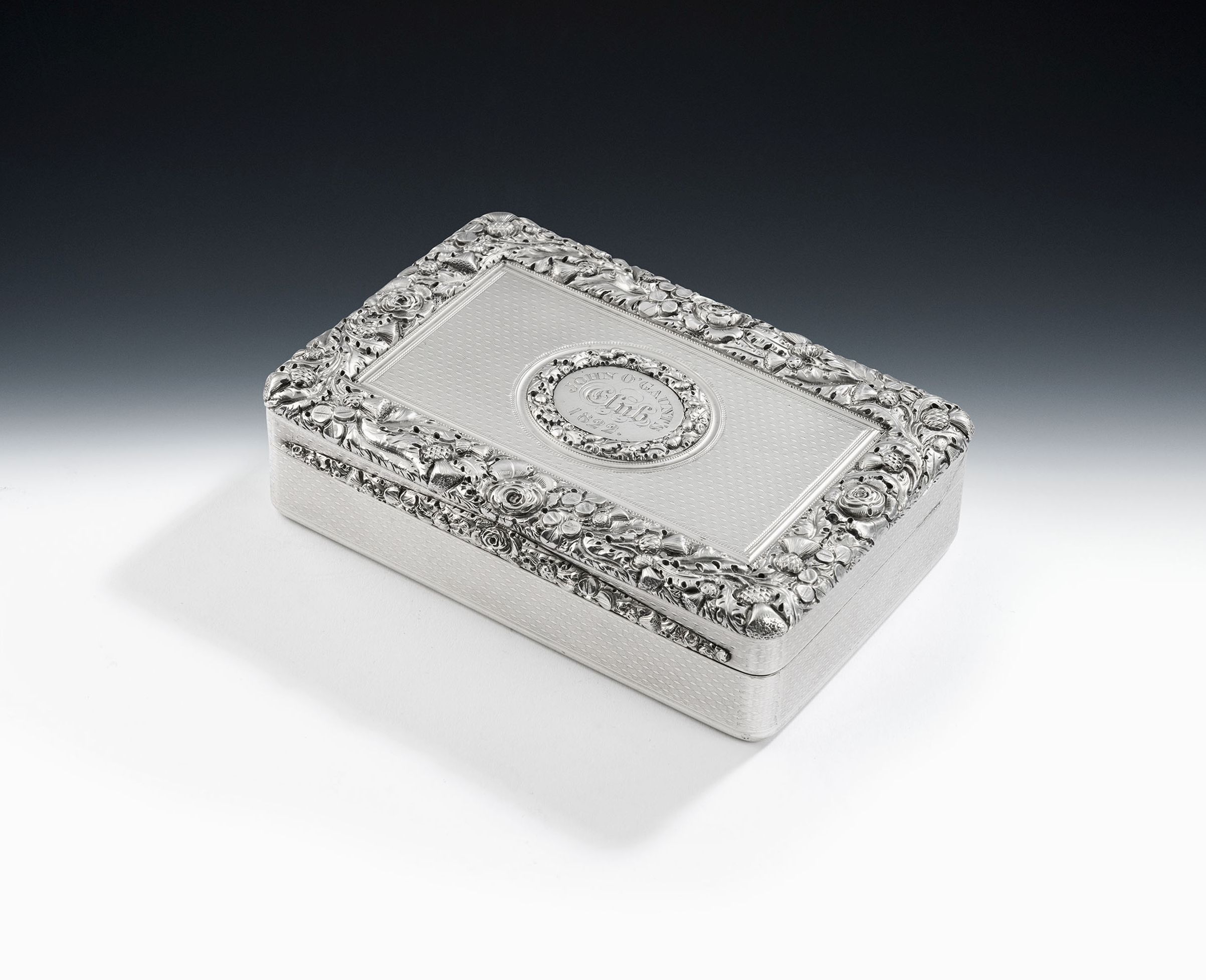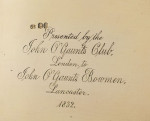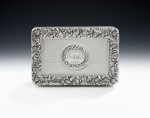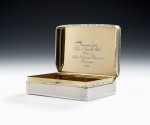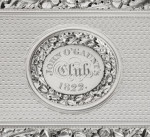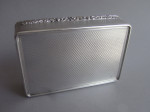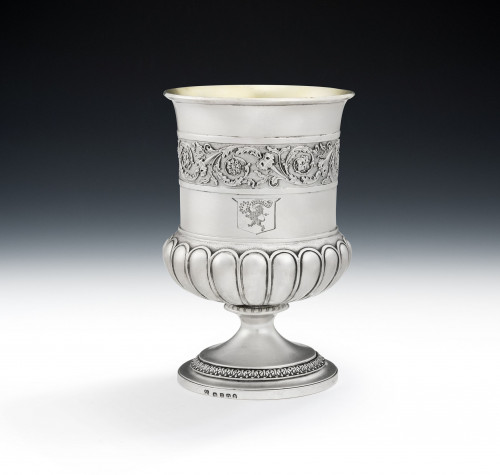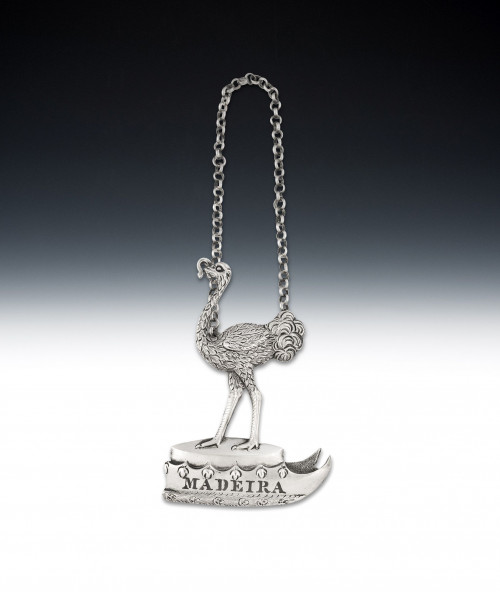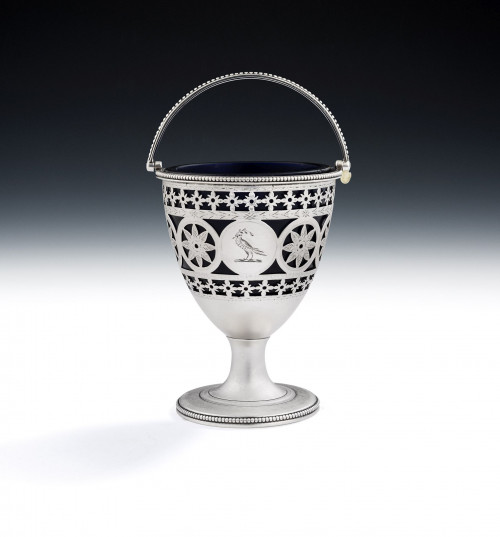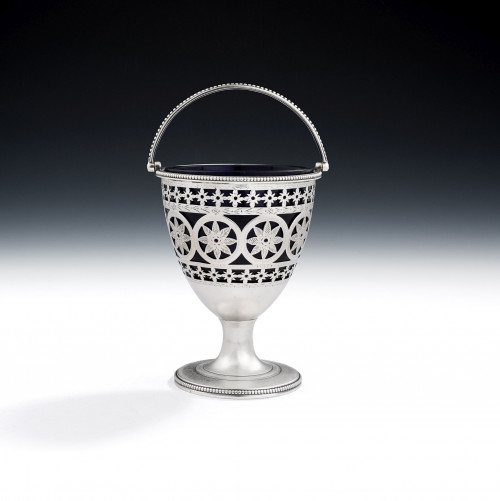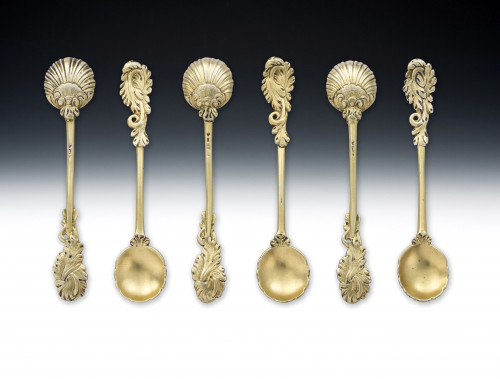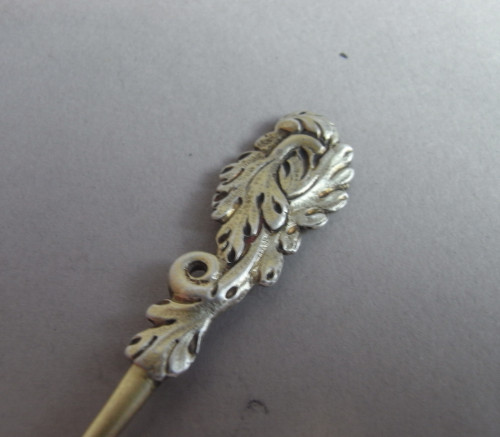- Home
- British Silver 1760-1830
- An exceptional George IV Table Snuff Box made in London in 1822 by John Linnit
An exceptional George IV Table Snuff Box made in London in 1822 by John Linnit
An exceptional George IV Table Snuff Box made in London in 1822 by John Linnit
375471
This exceptional box has a deep, broad rectangular, form. The base is decorated with engine turned designs, around a plain stepped frame. The cover displays a wide national emblem raised border decorated with roses, shamrocks and thistles. The centre displays an oval cartouche engraved with “ JOHN O’GAUNT’S Club 1822 ” surrounded by a raised oval cartouche decorated with acorns and oak leaves. This is also surrounded by a rectangular engine turned panel. The sides are also engraved with engine turning and the front display a protruding national emblem thumb piece. The interior has deep original gilding and the underside of the cover is engraved with:
“ Presented by the
John O’Gaunt’s Club, London to
John O’Gaunt’s Bowmen,
Lancaster
1832. ”
John O’Gaunt’s Bowman are detailed on the attached sheet. As you know all too well, John Linnit was one of the finest box makers of the Georgian period and the quality of this example is outstanding. It is also in the most wonderful condition, having had hardly any use over all of the years. It is fully marked on the inside of the base and with the maker’s mark, sterling mark and date letter on the underside of the cover. The weight is outstanding.
Length: 5 inches, 12.5 cm.
Width: 3.45 inches, 8.63 cm.
Height: 1.2 inches, 3 cm.
Weight: 15oz.
JOHN O’GAUNT’S BOWMEN
The origin of the John O’Gaunt’s Bowmen is thought to go back beyond the recognised reformation date of 1788. Proof is difficult as many of Lancaster’s records were destroyed in disastrous fires in the 16th and 17th century.
It had an official shooting uniform in 1788 which consisted of dark green frock coat, with plain yellow buttons, with a bow and arrow embroidered on a black velvet collar, white kerseymere breeches and waistcoat and stockings, a black hat with one green and one black feather.
In 1820 the Society had two uniforms, one for shooting and the other Full Dress. For this they added to the above white silk lining to the coat, crimson military sash and black stock or neck cloth. The shooting dress was changed to Kendal green frock- coat with gilt buttons depicting three crossed arrows, white drill trousers, a green forage cap with the black and green feathers and a black neck cloth or stock.
At this time, it was customary to give a “bishop” or comparative gift upon election to the Society. Upon marriage a member was expected to give a minimum of twelve bottles of wine, but this was usually exceeded on a lavish scale.
During the 1850’s it’s annual shoot was held on the Fairfield in Lancaster often followed by a lavish ball. On this day the town had a half day holiday and a military band played at the event. The number of spectators often exceeded 3000. The trophies during the 1800’s were usually silver. The finest was a silver jug holding about a gallon, engraved with Society’s badge of a rose and crown surrounded by “John O’Gaunt’s Bowmen – Centenary Challenge Prize 1788-1888”. Other prizes were Champion Medal and Clasp dating from 1789, a large silver arrow dated 1788, small silver arrow 1820, a gilt arrow 1829. Best gold was often a solid gold keep sake. None of these items currently exist; they have been lost from sight after being placed in an antique shop in Lancaster and then being reclaimed by someone connected to the club in 1968/70.
Thank you for your enquiry.
We will get back to you soon.
Please create wishlist to add this item to
RELATED ITEMS


A very unusual set of four George III Salt Cellars made in London in 1805 by Solomon Hougham.
£2,450

